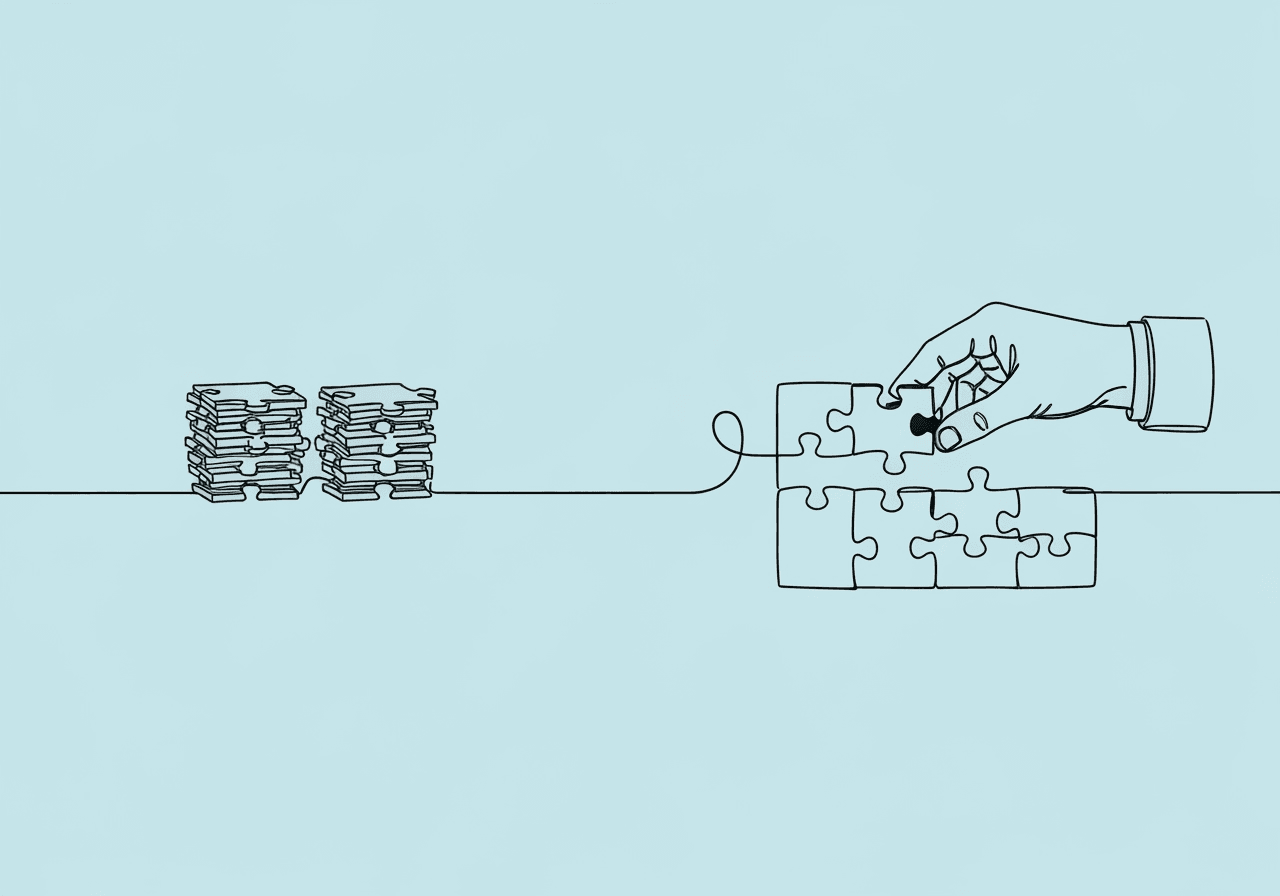BCBA FBA Documentation for CPT 97151: Complete Guide

BCBA FBA Documentation for CPT 97151: Complete Guide
Dealing with insurance billing in ABA can be tough for BCBAs, especially when you need claims paid quickly. Proper BCBA FBA documentation for CPT 97151—the code for behavior identification assessments—forms the base of good reimbursement. It helps show medical necessity and connect assessments to solid treatment plans. Without careful records, even strong functional behavior assessments (FBAs) can face denials, delays, or audits that waste time and effort.
This guide gives BCBAs practical steps to handle documentation well. It draws from key guidelines like those from the ABA Coding Coalition and payer rules. You'll learn about CPT 97151 basics, how to prepare for assessments step by step, tips for observational data and indirect methods, ways to write narratives that fit insurance needs, the BCBA's key role in linking to treatment, and how to dodge common errors. In the end, you'll gain tools to make your work smoother and add more value for clients and teams.
Key Takeaways
- Master CPT 97151 by documenting direct involvement, timestamps, and caregiver input to meet payer limits like 32 units in 14 days.
- Prepare assessments with consent, prior auth checks, and tools like ABC data for accurate baselines.
- Use precise behavior definitions and multi-session data collection to build reliable FBA reports.
- Craft narratives that tie findings to medical necessity and skill gaps, supporting reauthorization.
- Avoid denials by tracking time exactly, attesting documents, and customizing for payers.
Introduction to the CPT 97151 Code and BCBA Documentation Requirements
CPT code 97151 covers adaptive behavior assessment procedures done by a qualified professional like a BCBA. It includes face-to-face work with the patient and caregiver, plus non-face-to-face tasks such as data review and planning. The ABA Coding Coalition (ABA Coding Coalition FAQ) notes that this code handles initial assessments and reassessments. It involves observation, tests like the VB-MAPP, and setting personal treatment goals. Records must show the BCBA's direct role, since tech-led data collection uses a different code (97152).
For BCBAs, the focus is on full records that prove clinical reasoning. Include times for all tasks, proof of caregiver involvement in at least one session, and behavior data analysis for choices. Payers like Medicaid often cap billing at 8 hours (32 units) per assessment, done in 14 days, based on ABA Coding Coalition guidelines on Medicaid MUEs (ABA Coding Coalition Medicaid MUEs). If records miss these points, denials can happen. So, accuracy matters a lot.
BCBA FBA documentation needs several main parts. First, review the full behavioral history and medical background in detail. Next, define target behaviors in ways that anyone can observe and measure. Finally, blend indirect methods like interviews with direct ones like observations.
These steps help follow rules and support good ABA care, as in the BACB Ethics Code.
Step-by-Step Guide: Preparing for the Assessment
Start preparing for a CPT 97151 assessment with solid planning. Gather baseline info and get approvals early. Review the client's files first, such as past IEPs, medical diagnoses, and any behavior data. The Association for Behavior Analysis International (ABAI) suggests this in their CPT guidance (ABAI CPT Assistant Guide). It spots skill gaps and makes sure the FBA covers medical necessity.
Get informed consent from caregivers. Explain the process and how it shapes treatment. Check insurance coverage and prior authorization needs for that payer. Most U.S. insurance payers require prior authorization for ABA therapy, per the ABA Coding Coalition Model Coverage Policy (ABA Coding Coalition Coverage Policy). Plan sessions with both client and caregivers for at least one joint face-to-face meeting.
Then, pick the right tools:
Indirect assessments can use structured interviews or tools like the Functional Assessment Screening Tool (FAST) to guess behavior functions.
For direct methods, set up ABC (Antecedent-Behavior-Consequence) data in everyday settings.
Add standardized measures such as VB-MAPP or ABLLS-R to check adaptive skills.
Count preparation time as billable non-face-to-face units under 97151. Wrap up this prep in the first few days. That way, you can run the assessment smoothly and cut timeline issues.
Documenting the FBA: Best Practices for Observational Data and Indirect Assessments (ABC Data, FA, etc.)
Good FBA documentation covers the complex aspects of behavioral assessments. It mixes indirect and direct methods to make a solid case for CPT 97151 billing. Start with indirect assessments like caregiver interviews and file reviews to set the scene. The Colorado Department of Education FBA Guidance (Colorado FBA Guidance) recommends defining target behaviors clearly. For example, describe "aggression" as "hitting others with open hand, resulting in skin contact, for more than one second." This helps with agreement between observers.
For observational data, focus on direct methods like ABC charting. Note antecedents (like a demand given), behaviors (like an escape tantrum), and consequences (like removing the task) in various places. In a functional analysis (FA), record test conditions—such as attention, escape, or access to items—and behavior rates. Use data sheets or digital tools for precision. Include details on environment, like time, spot, and people involved.
Follow these best practices. Collect data over multiple sessions spanning several weeks to ensure reliability, as in the PBIS Tier 3 FBA Guide (PBIS FBA Guide). Turn findings into a hypothesis, such as "The behavior serves to escape demands, happening 80% of the time during academic tasks." Add raw data in appendices for clear audits.
Skip fuzzy descriptions. Quantify what you see to back up the time spent on assessment. This method aids billing and improves intervention results.
Crafting the Insurance-Ready Narrative: Justifying Medical Necessity and Skill Deficits
The narrative in an FBA report turns data into a strong story of medical necessity. It connects right to CPT 97151 needs. ABAI guidelines (ABAI Supplemental CPT Guidance) stress showing how behaviors harm daily life, like social ties or self-care, tied to a diagnosis such as autism spectrum disorder (ASD).
Show medical necessity by listing skill deficits. For instance, "The client's gaps in social initiation, shown by zero peer contacts in 30-minute watches, call for ABA work to stop isolation and aid growth." Refer to DSM-5-TR for ASD and explain how the FBA shapes a custom plan with baselines and goals.
Build the narrative this way:
A summary of findings blends ABC data and FA results to confirm function, like attention-seeking.
An impact statement covers how unchecked behaviors hit safety, school, or family life.
A rationale for services links to proven ABA, with goals like cutting maladaptive behaviors.
Add caregiver views to show teamwork. For reauthorization, note changes since the last FBA, following payer rules like those from Evernorth (Evernorth ABA Billing Codes). Keep it short but full, free of slang yet professional.
This part should flow well and meet standards.
The BCBA's Role: Linking FBA Findings to Treatment Plan Goals and CPT 97151 Billing
The BCBA acts as the main clinician, connecting FBA results to real treatment plans. This makes sure CPT 97151 records show the link. The ABA Coding Coalition (ABA Coding Coalition Codes) says billable time covers data review to create SMART goals—specific, measurable, achievable, relevant, time-bound. An example: "Cut escape elopements from 5 to 1 per week in 3 months using differential reinforcement."
Connect findings straight: If data shows sensory triggers, goals could focus on tolerance skills. Record how these fix skill gaps and justify more ABA. The BCBA leads but does not hand off main assessment parts, setting 97151 apart from tech codes.
On billing:
Track all time, including report writing, as non-face-to-face.
Use modifiers like HA for assistants only when needed.
Refresh plans every quarter or with big changes for reauthorization.
BACB ethics stress plans centered on the client. This role boosts pay while focusing on client gains.
Tips to Avoid Denials (Common Pitfalls in FBA Documentation)
Denials for CPT 97151 claims often come from record shortfalls. But smart steps can lower those risks. A leading cause of denials in behavioral health claims is not enough detail on medical necessity. Always connect behaviors to functional issues and treatment reasons clearly.
| Pitfall | Impact | Fix |
|---|---|---|
| Inaccurate time tracking | Leads to audits and partial payments | Bill only real face-to-face and qualifying non-face-to-face time; keep detailed logs |
| Missing signatures or dates | Causes automatic rejections | Add BCBA sign-off and timestamps to every page |
| Overlooking payer rules | Results in non-coverage | Tailor reports to insurers, e.g., confirm ASD diagnosis for Medicaid |
| Incomplete caregiver involvement | Fails code requirements | Record at least one joint session |
| Late or unorganized submissions | Misses filing windows | Use digital systems to file within 90-180 days |
To steer clear, do internal checks every quarter. Train your team on changes from the AMA CPT manual. Operant Billing (Operant Billing Error Tips) points out that standard templates cut mistakes by keeping narratives consistent. This helps build FBA reports for reauthorization that payers accept.
Frequently Asked Questions
What specific documentation is required for CPT code 97151?
Records for CPT 97151 need a summary of face-to-face work with the client and caregivers, like observations and talks. Add non-face-to-face tasks such as scoring data and planning treatment. The ABA Coding Coalition (ABA Coding Coalition FAQ) requires behavioral history, test results, and how findings shape goals. Caregiver input in one session is key, with times for all billable work.
How does documentation for 97151 differ from other ABA codes like 97153?
CPT 97151 centers on initial or reassessment planning by the BCBA, with indirect time included. CPT 97153 handles direct treatment by protocol. Operant Billing (Operant Billing CPT 97151 Overview) explains that 97151 needs proof of clinical choices, while treatment codes focus on session actions without planning.
What are common mistakes when documenting for CPT code 97151?
Errors often include unclear behavior terms, weak medical necessity links, and poor tracking of non-face-to-face time. The ABAI CPT Assistant (ABAI CPT Assistant Guide) says skipping caregiver teamwork or going over unit limits without reason sparks denials. Use clear definitions and measure data to fix this.
How often should an FBA be conducted for reauthorization under CPT 97151?
Do FBAs for reauthorization every 6 months or with major behavior shifts, per payer rules like Blue Cross (Blue Cross ABA Policy). Update the behavior plan with new data. Justify ongoing services using progress from before.
Can CPT code 97151 be used for telehealth ABA assessments?
Yes, use 97151 for telehealth with live video, where caregivers help the BCBA connect. But get payer okay first. The ABA Coding Coalition (ABA Coding Coalition Telehealth Guidance) requires notes on how online methods keep assessment quality, with some face-to-face parts.
What role does parental consent play in FBA documentation?
You must get written parental consent before an FBA starts, per IDEA rules and BACB ethics. The PATTAN FBA Process Booklet (PATTAN FBA Booklet) covers this. Record the form in the report, noting risks and benefits, to back billing and ethics.
Mastering BCBA FBA documentation for CPT 97151 turns assessments into key tools for client growth and practice strength. Focus on records from direct watches, caregiver views, and clear medical necessity links. This cuts denials, eases FBA report for reauthorization, and lets you deliver strong ABA work.
Next steps? Check your last five FBA reports against payer rules. Use standard templates for narratives. Set team training on CPT changes. Tools like Praxis Notes help with secure note-taking. In the end, good records secure billing and raise care standards for clients with ASD and their families. Check our CPT 97151 billing guide for more help.
Popular in CPT Codes & Billing
- 1
2025 ABA Billing Updates: Essential Guide for RBTs
1,5538 min read - 2
CPT Code 97153 ABA: Complete 2025 Billing Guide for RBTs & BCBAs
1,0774 min read - 3
CPT Code 97153: Complete Guide for RBTs
1,0649 min read - 4
Master ABA CPT Codes 97153-97158: Avoid Costly Audit Findings in 2025
6105 min read - 5
Master CPT 97155 Docs: Template & Tips for BCBAs
4529 min read
Popular in CPT Codes & Billing
- 1
2025 ABA Billing Updates: Essential Guide for RBTs
1,5538 min read - 2
CPT Code 97153 ABA: Complete 2025 Billing Guide for RBTs & BCBAs
1,0774 min read - 3
CPT Code 97153: Complete Guide for RBTs
1,0649 min read - 4
Master ABA CPT Codes 97153-97158: Avoid Costly Audit Findings in 2025
6105 min read - 5
Master CPT 97155 Docs: Template & Tips for BCBAs
4529 min read
Related Resources
Explore more helpful content on similar topics

CPT 97151 Documentation & Billing: FAQs for BCBAs
Master CPT 97151 documentation with expert FAQs for BCBAs. Learn 97151 billing guidelines, behavior identification assessment tips, indirect time rules, and reassessment frequency to ensure ABA compliance.

Master ABA Insurance Audit Documentation to Avoid Denials
Master ABA insurance audit documentation to avoid denials. This BCBA guide provides step-by-step preparation tips, checklists, and strategies to prove medical necessity and defend your claims effectively.

Master ABA Service Reduction Documentation for BCBAs
Master ABA service reduction documentation as a BCBA. Learn steps for justifying service fading, ensuring ethical compliance, securing payer approval, and collecting data to safely reduce hours without risks.